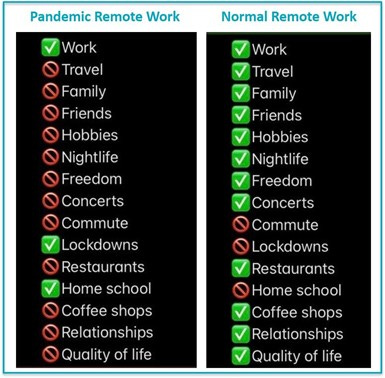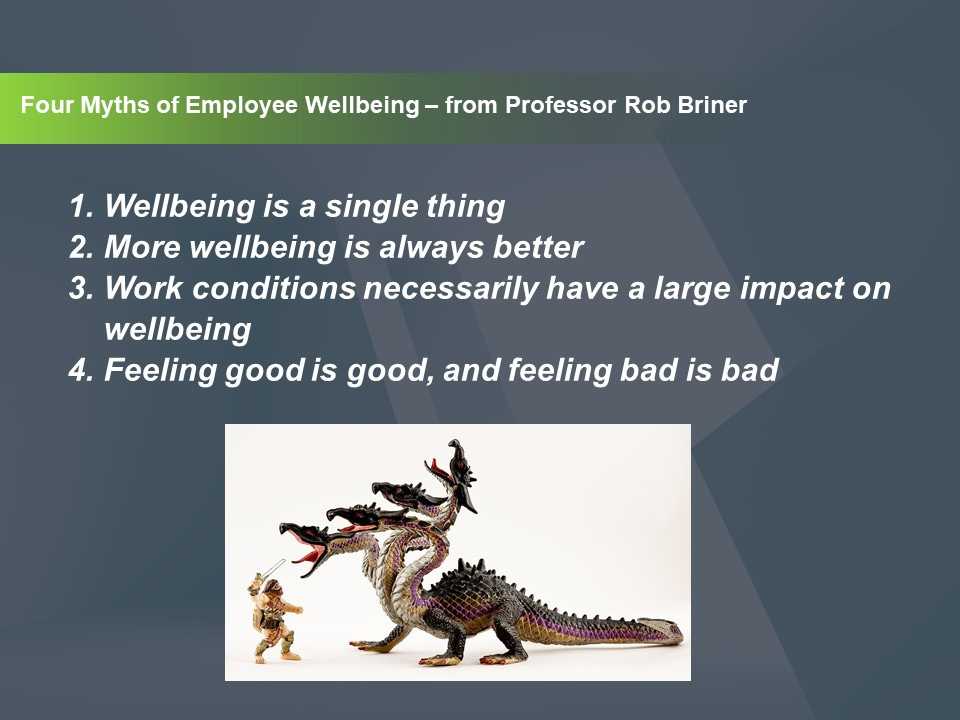
👋 This is the 23rd regular update from the Workforce Futurist Newsletter – which is read by those on a journey to make work better.
📬 You can get future issues delivered to your inbox, just enter your email here:
Today’s Workforce Futurist is brought to you by…Visier
I have spoken to HR audiences recently about an increasingly important role as the People Scientists in organisations. We have a great opportunity with technology and workforce data to solve business problems. Visier is the market leader in Workforce Analytics, a cloud-based analytics application that delivers fast, clear people insight. Their clients include 1 in 3 of the Fortune 500 from BASF to Panasonic and Experian. You can download their Workplace Trends Report 2022 by clicking the button below.
First came the virus and then came the fallout.
The pandemic has not only damaged our physical health but also our mental health too.
Research on ‘Burnt Out Britain' found that 73% of respondents feel more burnt out since the onset of the pandemic.
The top reasons, cited by Visier and Censuswide, for burnout, were :-
shortages of employees (38%)
long working hours (30%)
lack of recognition in the workplace (25%).
The data suggests young professionals aged 16-34 are most likely to experience burnout, with a staggering 80% of Gen Z reporting feeling burnt out.
We all know somebody who has suffered from the pernicious effects of occupational burnout. I have. Maybe you have, or someone you know.
Indirectly, we have been impacted by burnout. When there were not enough drivers, nurses, teachers, baristas, or the local pizzeria shut on Wednesday night.
Burnout is defined as Chronic workplace stress that has not been successfully managed is characterised by three dimensions:
1) feelings of energy depletion or exhaustion;
2) increased mental distance from one’s job, or feelings of negativism or cynicism related to one's job; and
3) a sense of ineffectiveness and lack of accomplishment.
Re-establish Healthy Routines and Buffers
In some cities, 40-50% of the workforce are able to work remotely.
This was a shock to the system for many people who had to adjust their work/life balance rapidly.
Away from a boss 😀 and a shared office you lose certain organisational routines and buffers. The first reaction is Great! No set office hours, or 5-day working week, set meal-times, work socials. But some work rituals do have a useful purpose.
I have worked remotely and managed virtual teams for many years and shared some tips that work for me on a Twitter thread.

One theme is re-establishing some of the routines and buffers that can be lost from some office rituals.
Set your own schedule. Work at times to suit you and the type of work you do if you can. For example, do the most important stuff first thing, leave admin and calls in afternoon 😴. Schedule meals, daily exercise, yoga, feeding the animals🦙 and stick to it.
Control demands on your time. Try and influence demands on your time if you can to suit you. Keep initial meetings to 15m.
Re-create your buffers. Stop work at a set-time, switch off all social media. Allow yourself time to wind-down from work.
Take your holidays! Every quarter, I take a complete week off work. It doesn’t matter where I am physically - I uninstall all work apps on my phone.
Remote Work BC Vs AD - Before Covid Vs After Delta
What works for me, won’t necessarily work for you - especially if you work as a potato farmer, a nuclear scientist, or a schoolteacher.
As People Scientists in the workplace, trying to isolate cause and effect relationships in the real world is hard.
We are talking about mental wellbeing, which is a complex area with various causes and factors.
It is far too simple to compare BC Before Covid with AD After Delta.
I think the diagram below illustrates the factors that might have changed for individuals pre and post-pandemic.
Improving Wellbeing in the Workforce
It is estimated by the World Health Organization that 115,000 healthcare workers have died in the pandemic so far, which is tragic.
When we work, we have the realistic expectation that we will not be harmed.
Burnout is part of a wider field of mental and physical wellbeing in the workplace.
“Wellbeing integrates mental health (mind) and physical health (body) resulting in more holistic approaches to disease prevention and health promotion.” CDC
The wellbeing of an individual is not an employer’s responsibility.
On the other hand, employers have a duty of care to their workers to provide safe working environments. This includes preventing accidents in the workplace, which is a big focus in industries such as construction, mining, energy. It also means that employers need to provide work that is free from harassment, discrimination and toxic work cultures which cause low morale and even mental health issues.
How Can Employers Reduce Burnout?
Organisational tactics to reduce burnout will depend on what factors are causing it.
Be wary of high-level generalisations by industry commentators 🙋♂️
For example, to understand the so-called Great Resignation, you have to lift it up a level, re-frame it, or dig deeper into your industry or organisation.
Why are people leaving YOUR organisation?
Is it because they have left to join a Web3 start-up, decided to retire early, managed to halve their living costs, or can’t cope anymore? Or is it because working mothers have nowhere to put their kids? Research by Andrea Derler and Lexy Martin shows that women and men have both been resigning, but women’s resignation rates have increased more.
In Evidence-Based Management terms, you are unlikely to find the perfect meta-analysis with applicability to your industry. The Microsoft report on remote working (see below) might not resonate with your workforce of industrial cleaners, and what works for Andy might not work for you.
The message to HR is Do Your Own Research.
Some Suggestions on Preventing Burnout
Adopt a Holistic approach to Workforce Design and Effectiveness - Just as positive wellbeing requires a holistic approach to health, we also need to look at the big picture for our organisational health. Good work design is fundamental to both wellbeing and productivity.
Listen to Workers - employee sentiment and feedback are not only important for hiring, retention, and engagement. They are essential business processes. And not all your workers are employees - any wellbeing strategy should consider freelancers, contractors, and some suppliers too.
Evaluate what works in YOUR organisation – be sceptical of marketing claims and do your own research. Critically assess the best available evidence. Start with problems not solutions. Ask better questions.
Try new Technology - Technology is not the whole answer but can help to improve workforce inclusion, fairness, and productivity if implemented sensibly using evidence-based practice. Use pilots.
Maintain a well-tuned Workforce Measurement Engine 🏎️ - capture the right workforce data across the employee lifecycle.
Empower workers to be healthier and more productive – but don’t spy on them! Just because we can measure it, doesn’t mean we should.
Some Useful Resources on Wellbeing in the Workplace
Supporting Workers’ Mental Health - excellent resource with toolkits from Mind, NHS Employers and others
Health and Wellbeing at Work – CIPD Report
Zoom Back to the Office – A Guide For Leaders - Workforce Futurist
What do we know about the effectiveness of workplace mental health interventions – Literature Review - Kings College (PDF)
The Next Great Disruption is Hybrid Work – Microsoft Report
Look after yourself.







